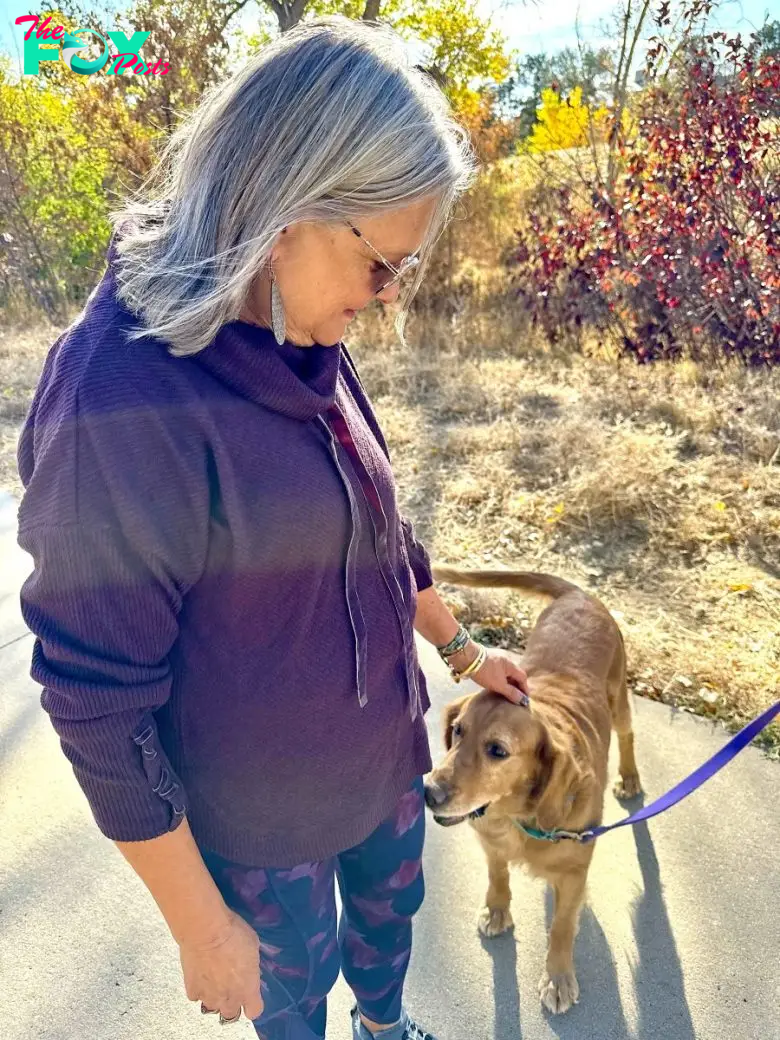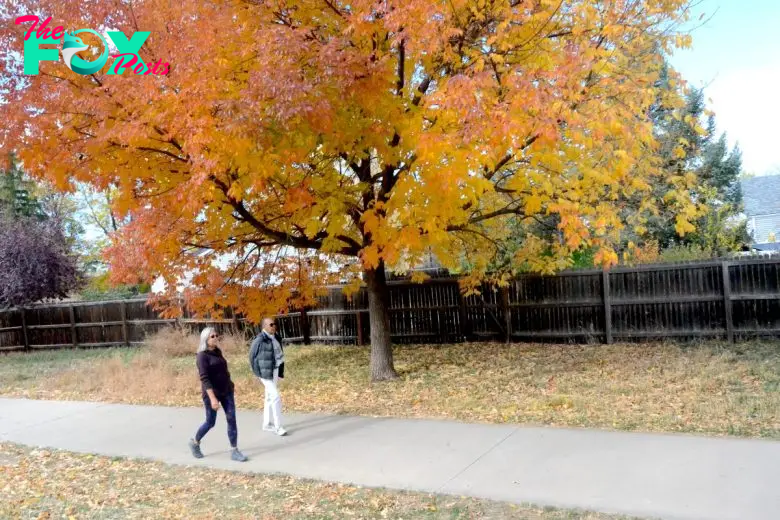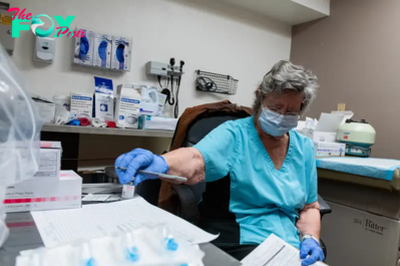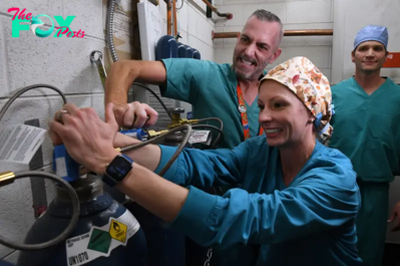Health
How Colorado is trying to make the High Line Canal a place for everyone — not just the wealthy

After she was attacked during a walk on the High Line Canal trail, Debi Hunter Holen returned to it for the peace the violence had stolen from her.
A bench with a quote from Hunter Holen — “walking in gratitude, serenity returns” — marks the spot where a man beat her, unprovoked, with a piece of wood four years ago. He was sent to prison for 25 years.

She feels safe enough to walk alone on the trail now. She sees other women carry sticks but doesn’t feel a need to do that. It’s not lost on her that on many of her walks she passes by the bench where the attack occurred, and yet, the chance to connect with nature, something she relishes, calms her. She wants that peace for the residents who live nearby, and she hopes they find it on the trail as well.
She and others associated with the High Line Canal Conservancy are working toward that very goal. She belongs to a committee the conservancy put together to represent a 28-mile northeastern stretch of the 71-mile trail and the neighborhoods that surround it. The area is full of diverse families who generally have lower incomes, and the conservancy is setting aside an outsized portion of its resources to help them enjoy it.
“These communities haven’t always been involved,” said Suzanna Fry Jones, chief programs and impact officer. “We want them to know it’s their trail.”
The conservancy has a lot to overcome to help those neighborhoods feel ownership of the canal trail, including moving aside barriers for diverse families with lower incomes to enjoy the outdoors. The conservancy also admits that, in the past, the section of the trail hadn’t been as well cared for as parts in more affluent areas, like the section near Littleton. They’ve already made efforts to change that, and those will continue.
“Making the canal feel like a welcoming space is a huge barrier for us,” Jones said.
The trail runs southwest to northeast through Douglas, Arapahoe, Denver and Adams counties. It starts in Littleton and ends in Aurora (you can find a digital map here). Residents of the Denver and Aurora areas face the greatest difficulties, conservancy staff believe, in finding peace on the trail.
☀️ READ MORE
Colorado county clerk spent $4,000 on get-out-the-vote billboard with her name, face on it
How Colorado is trying to make the High Line Canal a place for everyone — not just the wealthy
Feds release highly anticipated options for managing overstressed Colorado River in coming years
Many of those residents of the Denver and Aurora areas, Jones and Hunter Holen believe, don’t think the trail is for them, associating it with country clubs and other elite green spots like Golf courses or refreshing swimming pools that demand expensive memberships. Some don’t even know it exists, sometimes meandering just a half-mile from their home. And some residents don’t feel safe on the trail, possibly because of cultural differences or inexperience and unease with the outdoors.
Hunter Holen doesn’t face some of the same challenges her fellow Aurora residents do. She is white and a former Aurora city councilwoman, and her husband, Bill Holen, is an Arapahoe County commissioner. She is retired and works part-time as the executive director of the Colorado School and Public Employees Retirement Association. But she can relate to the fear.
She chooses, instead, to focus on the times the canal trail was there for her. She walked when her mother was going through Alzheimer’s. She walked to soothe her own PTSD from the attack. She plans to walk the trail again — all of it — on a continuous journey that may take her a week and she hopes to break up by staying in hotels along the way.
She’s 67, and surely, if she can use the trail for some serenity, maybe her fellow residents can too, even if their lives don’t appear to welcome it.
“I am living proof,” Hunter Holen says, “that you can not only overcome. You can progress.”

An unfortunate reputation
Not everyone struggles to make a living in Aurora. Hunter Holen, who moved to Aurora in 1979 and has loved it ever since, is proof. The city does have a reputation, perhaps unfairly, as an unruly place where gangs run rampant through broken streets. Donald Trump, during a rally there Oct. 11, called it a “war zone.” Hunter Holen chooses to laugh at comments like that and look at the bright side: At least he didn’t say Aurora residents were eating their Pets.
The only unruliness Hunter Holen encountered during her morning walk was a sassy squirrel chirping about its stash for the upcoming winter. She doesn’t blame the trail for her attack or consider it a bad place. If anything, it’s helped her look beyond her beloved city’s bad rep: During her walks, she would see kids playing, for instance, and their parents tidying up their backyards without worrying about their little ones’ safety.
“When I walked the canal, I began to have a different viewpoint for the neighborhoods in the area,” Hunter Holen said. “You experience the community as you walk. You don’t do that when you drive.”
This is the sense of peace that the High Line conservancy wants to offer to other residents in the area, and it’s now in a place where it believes it can do that. It has some say over the canal, especially now that Denver Water this year transferred part of the deed to Arapahoe County, which now owns 45 miles. Denver Water owns 20 additional miles but that will likely change at some point.
For more than a decade, Denver Water has viewed the canal, which was built in 1883, as an inefficient, even wasteful, way to transfer water, given that 80% of it evaporates or seeps into the ground. Denver Water hopes to decommission all of it in the next five years, but the northeastern portion hasn’t carried water for 20.
That inspired the conservancy to form in 2014 since Denver Water is a utility and “isn’t in the recreation Business,” Jones said. The canal will still manage stormwater during occasional heavy rains, but it’s really much more of a recreation site now.
-

 Health7h ago
Health7h agoTeens Are Stuck on Their Screens. Here’s How to Protect Them
-

 Health12h ago
Health12h agoHow Pulmonary Rehab Can Help Improve Asthma Symptoms
-

 Health12h ago
Health12h ago10 Things to Say When Someone Asks Why You’re Still Single
-

 Health1d ago
Health1d agoThe Surprising Benefits of Talking Out Loud to Yourself
-

 Health1d ago
Health1d agoDoctor’s bills often come with sticker shock for patients − but health insurance could be reinvented to provide costs upfront
-

 Health2d ago
Health2d agoWhat an HPV Diagnosis Really Means
-

 Health2d ago
Health2d agoThere’s an E. Coli Outbreak in Organic Carrots
-

 Health3d ago
Health3d agoCOVID-19’s Surprising Effect on Cancer



























